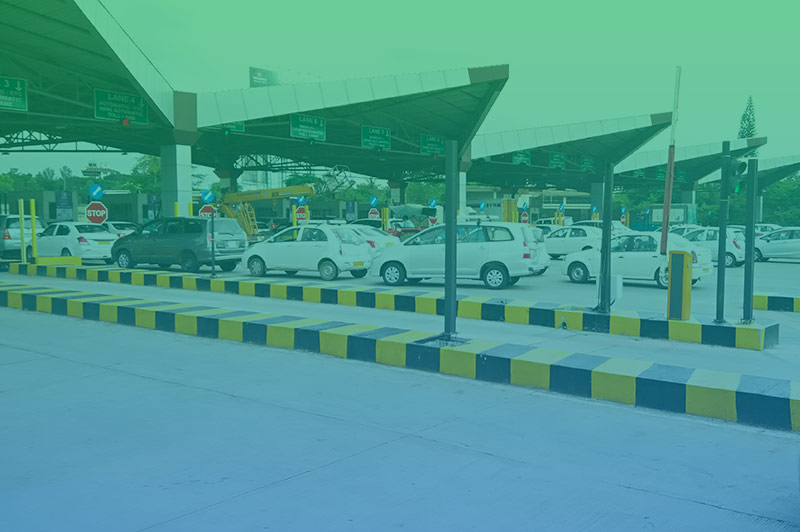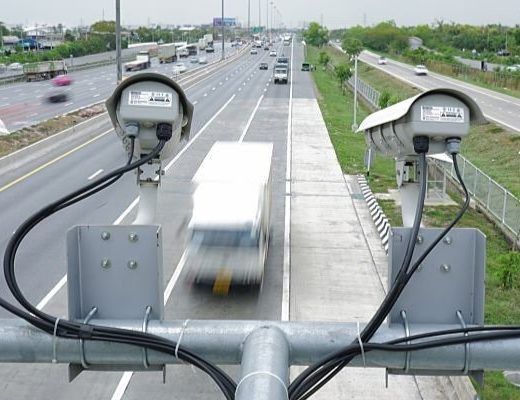A new approach to enhancement of ETC!
About Tolling, its volumes and potential in India
Currently, there are 13,900 km of completed Toll highway projects, and a total of Rs. 25,000 Crore in value of toll being collected annually. However, this figure is still small, only 50 per cent of what will be coming in the next few years with the growth of the highway development. Undoubtedly, the government’s mission to enhance the highway standards is marching towards new heights with each passing day. But, the implementation of an effective and productive toll collection system has thrown up a challenging task at road operating agencies in order to extract maximum revenue, and also to maintain the traffic flow. The new highways create higher flow rate of traffic and the stops at the toll plaza prove counterproductive to the enhancement of the highway capacity, which costs thousands of crores to build.
What is happening globally?
Globally, gone are the days when toll collection used to happen manually and travelers had to wait in long queues to make the toll payment. Now, the modern-day toll management is all about electronic toll collection (ETC) systems, which is advanced and technology-oriented. When it comes to ETC, many devices are interlinked and operate in sync to make the process effective and the functioning smooth. There is not an iota of doubt that this kind of automated toll system, which is centrally connected and controlled, has made the toll collections easy for the toll collectors along with the authorities.
Use of RFID as an ETC platform for a National Standard in India
Not to forget, the radio frequency identification (RFID) is an integral part of the toll systems today. It is the form of wireless communication that uses radio waves to identify and track vehicles. The role of RFID begins when a user enters the communication zone and reader communicates with the tag to complete the transaction instantly. As this happens, the exit boom barrier raises to make way for the vehicle. The technology adopted for India is 18000-6c, which is a very cost effective solution but it also has certain limitations that can be easily overcome.
Accuracy Expectations vs Current Technology limitations
The guideline of National Highway Authority of India (NHAI) which suggests that the accuracy level should not be less than 99.5 per cent is also a challenge for RFID based on ISO 18000-6c. Though scoring 99 out of every 100 vehicles that pass through the electronic toll collection (ETC) lane need not to be a task for any technology, RFID’s reading of 96 percent, which is 4.5 per cent less, is indeed shocking. Add to that the chances to the tag being torn or damaged as being part of a failed attempt at being used in two vehicles.
What really affects the RFID accuracy?
Well, there are various reasons that cumulatively decide the fate of RFID. How far the reader is from the tag range, control and positions of the tag, size of the tag, performance, access time and location information in the database play a pivotal role in deciding RFID’s accuracy.
The Solutions…
But, can there be no solution to such a problem. Metro Infrasys (MI) has a simple yet effective formula to overcome this inevitable issue.
According to technocrats at Metro Infrasys, when RFID and automatic plate number recognition (APNR) combine, the output gets much enhanced. We have piloted and installed an ANPR camera with the infrared (IR) illuminator before the payment booth across all the lanes in one of our flagship projects. Since the ANPR camera is capable of capturing the frame of every vehicle’s number plate, each camera will be integrated with ANPR server equipped with artificial intelligence (AI) based software for processing the vehicle number with image.
Then, the output of ANPR software is integrated with the toll lane software to check within the local database of valid tags with the details of available trips. In case of valid details, the transaction will be performed by the system.
The APNR and RFID technologies will work together to improve the overall reading accuracy of the RFID reader to 99.5 per cent. In case, any of the system validates correct vehicle number followed by the right transaction of each vehicle class the transaction gets completed in few seconds. Then only, the toll barrier opens and if the payment is not authenticated, the toll barrier will not open.
Manual back office Correction for the 100 per cent accuracy
A manual back office is set up to correct the non standard number plates in order to bring the accuracy to 100 per cent. The results of that will soon be ready by the time we bring our next article on this topic.

